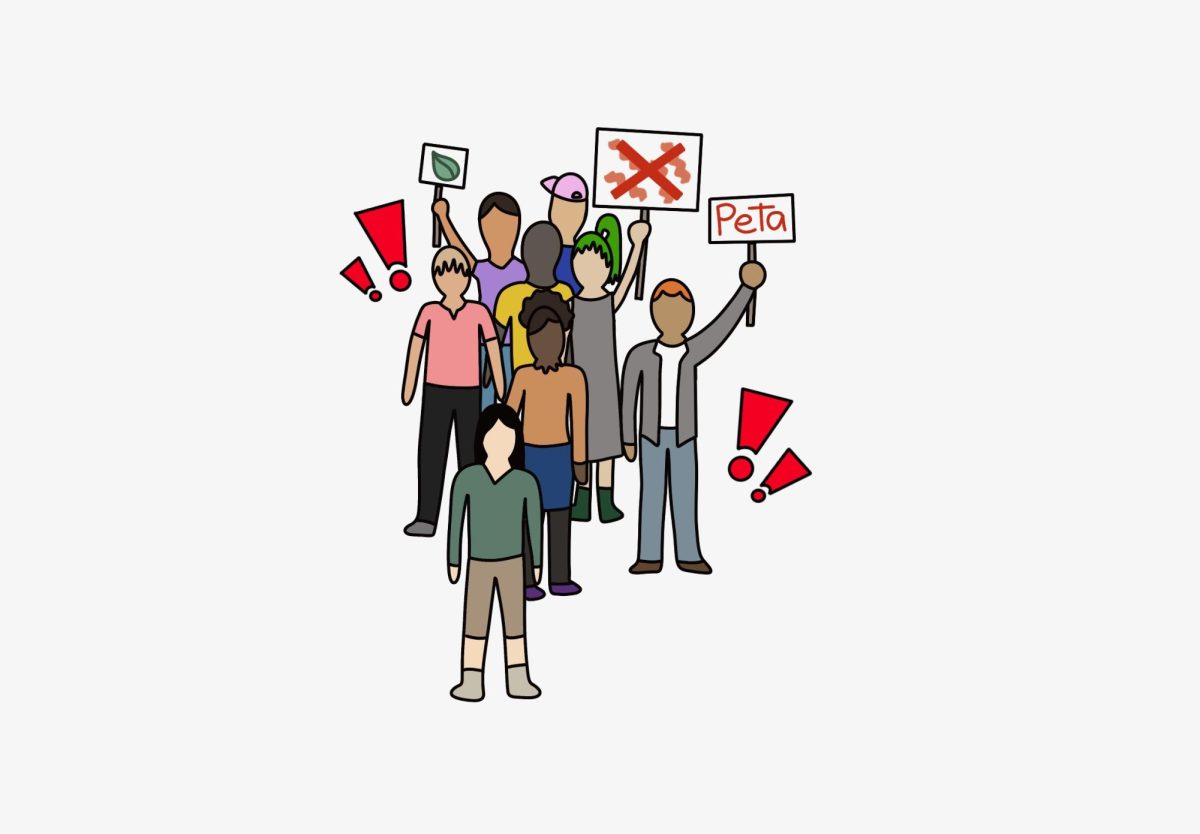Pools of fake blood, humans dressed as mice in dunk tanks, and a “lifelike baby” on a hot grill; these are some of PETA’s recent protests that have made headlines and stomachs turn.
People for the Ethical Treatment of Animals (PETA) is an animal rights organization founded in 1980 by activist Alex Pacheco, commonly known today for their graphic protests.
While PETA’s protesting strategy–the more outrageous, the better–is effective at garnering attention, their over-the-top displays often muffle their protests’ significance. Recent protests that have made headlines have ranged from the frightening, such as a group of “dying” protesters laying in a pool of blood outside of a Nordstrom, to the unsettling, an adult dressed up as a mouse in a dunk tank outside to symbolize the cruelty of testing drugs on mice. It is often hard to realize the actual messages of these protests when looking at photos of a cosplay mouse “struggling” to breathe in three feet of water.
“I’ve witnessed a number of PETA protests. The imagery is a little jarring,” says Ella Cho ‘25. Cho describes a protest she saw outside of a Canada Goose store where protesters held a paper mâché wolf carcass and played videos of the skinning process of live wolves. She acknowledges that it was attention-grabbing; however, she remarks, “[it was] a public space, and there were small children crying and running.” While Cho describes a scene for modern PETA protests, the organization has not always been synonymous with such disturbing displays.
PETA first gained notoriety in 1981 for their exposé of the US Department of Agriculture’s abuse of Silver Spring Monkeys. PETA pulled at the hearts of many Americans by releasing photos of mutated monkeys, missing limbs, covered in blood, and locked up in rusty cages.
Through their investigative journalism, PETA brought positive change as they influenced the nation’s first arrest and criminal conviction of an animal experimenter for cruelty to animals. They also influenced amendments to the Animal Welfare Act, which regulates animal treatment in experiments, such as the ban on drug testing on warm-blooded animals. Despite their investigative journalism’s success, PETA’s strategy against animal cruelty has drastically changed to their modern forms of evocative protesting.
PETA has proven most effective as a group of “muckraking” journalists focused on animal rights, not as a group known for extreme protests. If PETA wants to continue its legacy of improving animal rights, they should return to their old methods of investigative journalism and stop their strategy of eccentric protests.












